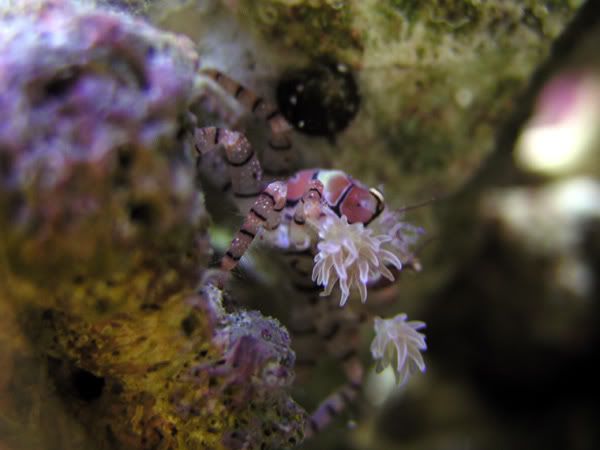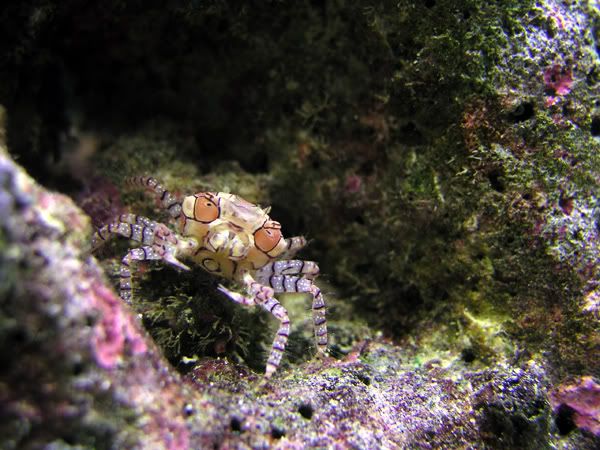Okay, here is a fabulous video of a 2.5g. nano tank with a Boxing Crab in it (turn on your speakers because this video is accompanied by cool Spanish guitar music):
http://www.zippyvideos.com/862218579125 ... luebastion
I stopped at my LFS today for some supplies, and lo and behold, I found a price sticker for a Pom Pom Crab ($14.98). I have never seen these before at my LFS, but tonight I saw a price sticker, and that means they had one in recently. (Maybe it's still in there and hiding

. So tomorrow morning I am calling the manager to have her order two of them for me. I am going to give them their own tank. I have one that is pretty much unpopulated -- except for two teeny blue-legged hermits and three white-banded cleaner shrimps. I don't think the shrimps would hurt the pom poms -- and my tank is full of little nooks and crannies and caves for the pom poms to hide in (I hear they like to hide). They are small and vulnerable to being picked on by others, so if you keep them (according to one book I read) they are supposed to be pretty much by themselves in a small tank where they can be "pampered."
Here's what the
www.petsolutions.com web site says:
Pom Pom Crab, Lybia tessellata, is a curiously comical aquarium addition. This Hawaiian native frequently carries a small anemone in each claw. There are at least two purposes for carrying the anemones. The first is a simple matter of defense. The Pom Pom will taunt would-be predators by shaking the anemones in hopes of stinging the invader into retreat. It also mops the substrate to gather uneaten food, thus creating a symbiotic relationship between the Pom Pom Crab and its pom poms. The anemone undoubtedly benefits by getting to eat its share of the treasure. Also known as the Boxer Crab, it is a hardy creature that grows to about an inch in length. Because of this small size, it is great for the mini-reef aquarium.
Approximate Arrival Size for Pom Pom Crab: .5 to 1 in.
Notes: This species must molt in order to grow. Molting generally occurs at night, when the lobster will lay on its back and exit its exoskeleton. A new exoskeleton is excreted and will harden over a period of several hours. The animal is vulnerable at this time and should not be disturbed. Proper iodine levels assist with successful molting.
Scientific Name Lybia tessellata
Diet Omnivore; Scavenger
Alt Common Name Boxer Crab
Family Xanthidae
Origin Hawaii
Aquarist Level Novice
Reef Safe With Caution (May sting animal and corals with its pom poms)
Coloration White with Red areas outlined in Black. Black banding in legs
Disposition Moderate
Hardiness Very
Mature Size 1 inches
Reproduction Method Females carry eggs on abdomen.
Sexual Dimorphism None visible.




